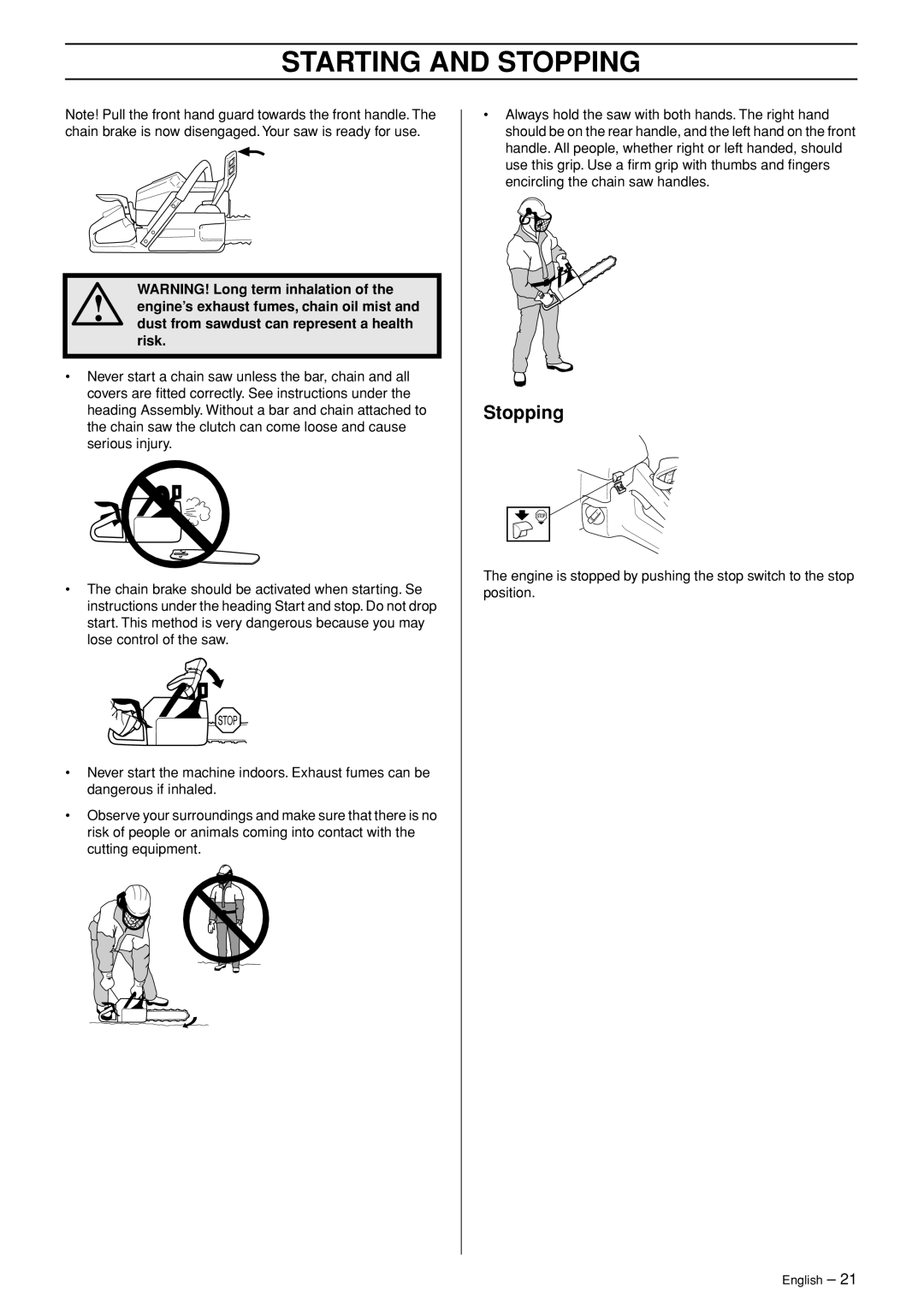345e EPA II, 346XP EPA I, 353 EPA II specifications
Husqvarna is a renowned name in outdoor power equipment, and its chainsaws exemplify performance, durability, and advanced technology. Among their impressive lineup, the Husqvarna 345e EPA II, 346XP EPA I, and 353 EPA II stand out due to their unique features and capabilities tailored for both professional and casual users.The Husqvarna 345e EPA II is designed for optimal power-to-weight ratio, making it a favorite for professionals who need mobility without sacrificing performance. This model is powered by a 50.1 cc engine that delivers a robust 3.2 horsepower, providing ample power for demanding cutting tasks. The 345e features a lightweight design, which reduces fatigue during extended use. It also incorporates the X-Torq engine technology, which reduces fuel consumption and emissions, ensuring compliance with EPA regulations. Additionally, the chainsaw comes equipped with an inertia-activated chain brake for enhanced safety and a tool-less chain tensioning system for quick adjustments.
Next is the Husqvarna 346XP EPA I, a top choice for professional loggers and tree care specialists. This chainsaw features a 50.1 cc engine as well, but its unique design focuses on high performance and exceptional ergonomics. The 346XP is renowned for its rapid acceleration and high chain speed, which allow it to tackle tough cutting jobs with ease. Its Air Injection technology separates larger dust and debris, ensuring the air filter remains clean for longer periods, thereby reducing maintenance. This model is also equipped with the LowVib system that minimizes vibrations, enhancing user comfort during prolonged use.
Finally, the Husqvarna 353 EPA II is tailored for those seeking a middle ground between professional and casual use. This chainsaw features a 49.5 cc engine and balances power with user-friendly features. It is equipped with the same X-Torq engine technology found in the 345e, ensuring efficient fuel consumption and lower emissions. The 353 also boasts a well-designed handle for improved grip and control, making it ideal for various cutting tasks from firewood to felling trees. Its quick-release air filter makes maintenance straightforward, allowing users to focus more on their work.
Together, the Husqvarna 345e EPA II, 346XP EPA I, and 353 EPA II represent a blend of cutting-edge technology and user-oriented design, delivering reliability and performance, whether for professional use or home maintenance. Each model offers unique strengths, ensuring there is a perfect fit for every chainsaw user’s needs.

